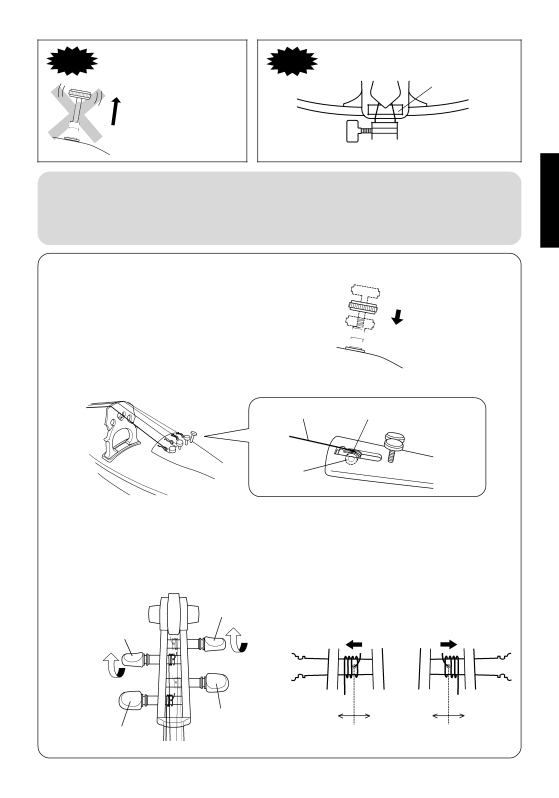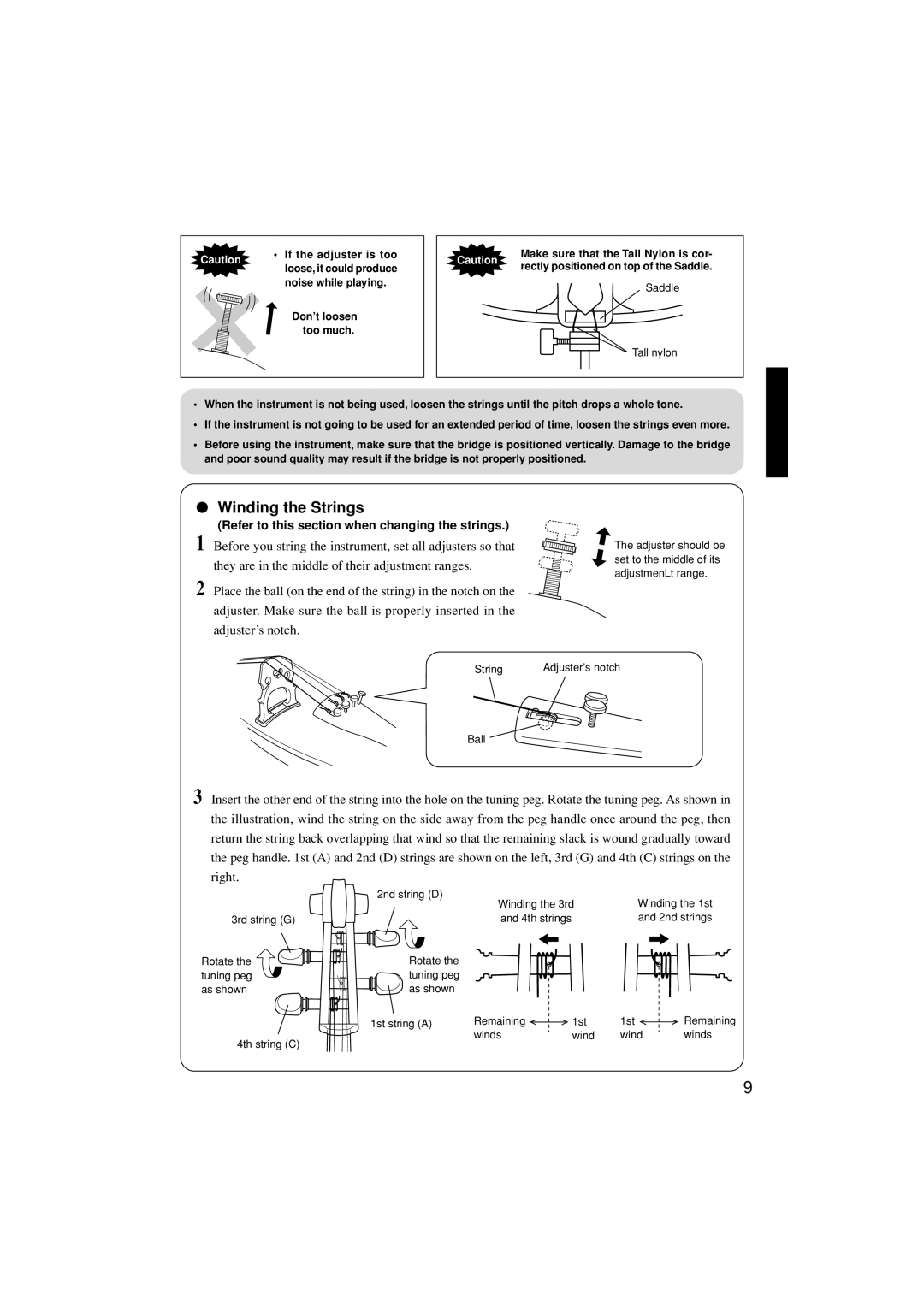
Caution | • If the adjuster is too | |
loose, it could produce | ||
| ||
| noise while playing. | |
| Don’t loosen | |
| too much. |
Make sure that the Tail Nylon is cor-
Caution
rectly positioned on top of the Saddle.
Saddle
![]() Tall nylon
Tall nylon
•When the instrument is not being used, loosen the strings until the pitch drops a whole tone.
•If the instrument is not going to be used for an extended period of time, loosen the strings even more.
•Before using the instrument, make sure that the bridge is positioned vertically. Damage to the bridge and poor sound quality may result if the bridge is not properly positioned.
●Winding the Strings
(Refer to this section when changing the strings.)
1 Before you string the instrument, set all adjusters so that they are in the middle of their adjustment ranges.
2 Place the ball (on the end of the string) in the notch on the adjuster. Make sure the ball is properly inserted in the adjuster’s notch.
![]() The adjuster should be set to the middle of its adjustmenLt range.
The adjuster should be set to the middle of its adjustmenLt range.
String | Adjuster’s notch |
Ball
3 Insert the other end of the string into the hole on the tuning peg. Rotate the tuning peg. As shown in the illustration, wind the string on the side away from the peg handle once around the peg, then return the string back overlapping that wind so that the remaining slack is wound gradually toward the peg handle. 1st (A) and 2nd (D) strings are shown on the left, 3rd (G) and 4th (C) strings on the right.
3rd string (G)
Rotate the tuning peg as shown
4th string (C)
2nd string (D)
Winding the 3rd | Winding the 1st |
and 4th strings | and 2nd strings |
Rotate the tuning peg as shown
1st string (A) | Remaining | 1st | 1st | Remaining |
| winds | wind | wind | winds |
9
